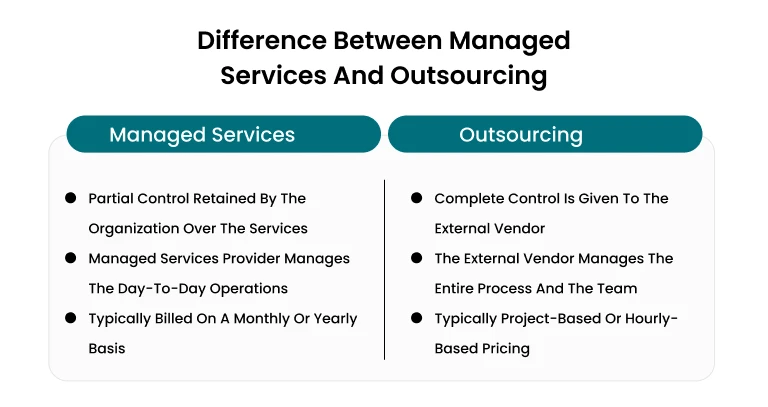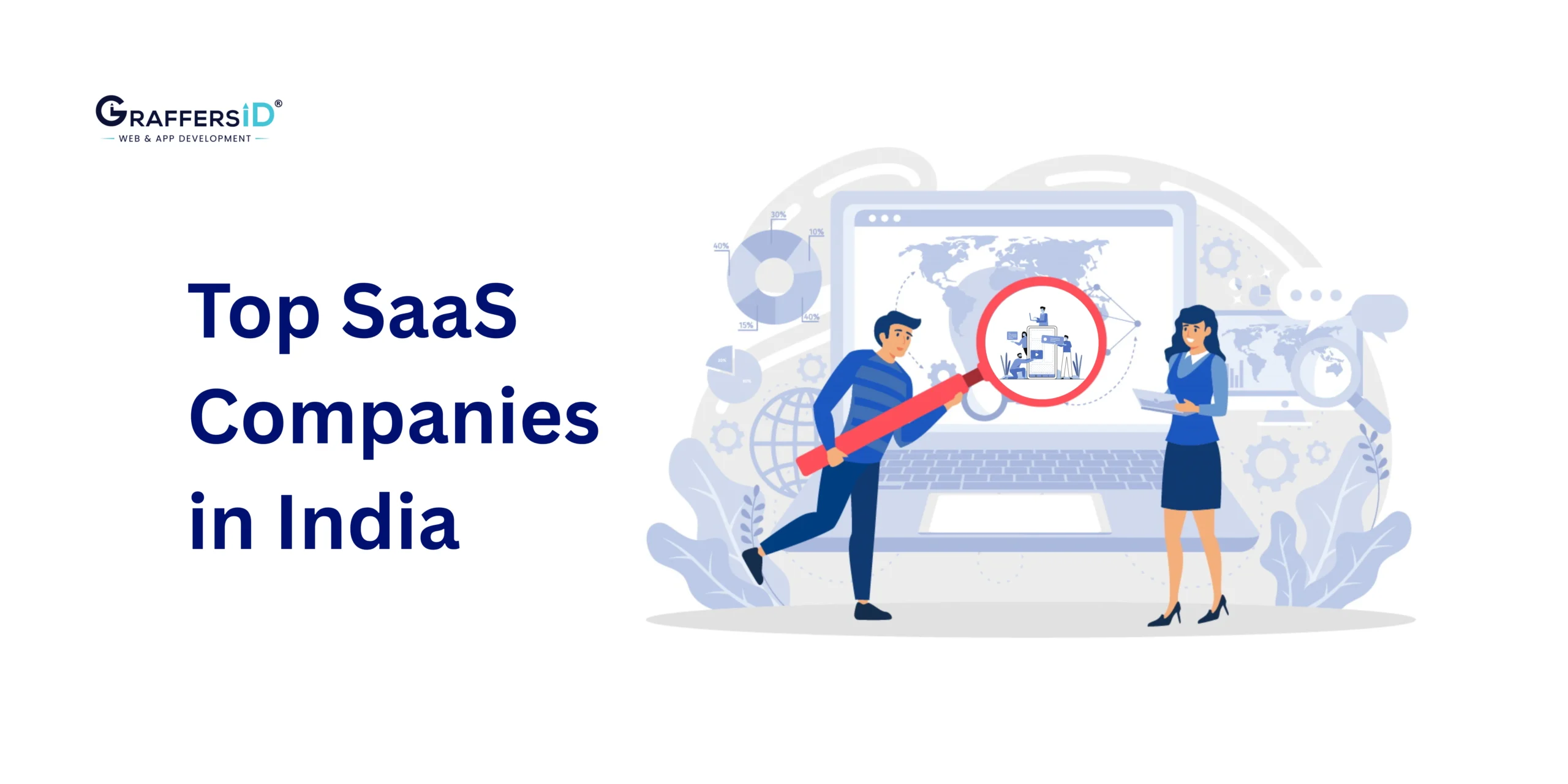As businesses rely more heavily on technology to operate, it’s become increasingly important for them to have access to IT expertise and support. Two common options for businesses looking to outsource IT services are outsourcing vs managed services. While these terms are often used interchangeably, they represent different approaches to IT service delivery, each with its own set of benefits and limitations. In this blog, we’ll explore the differences between managed services and outsourcing, and help you determine which approach is right for your business.
What are Managed Services?
Managed services refer to the outsourcing of IT management and support to a third-party service provider. The service provider takes responsibility for monitoring, maintaining, and updating the organization’s IT infrastructure and services, such as servers, networks, security, storage, and applications. Managed services providers (MSPs) typically use a proactive approach to detect and address potential issues before they cause downtime or other problems for the business.
Managed services are often delivered through a subscription-based model, with the provider charging a fixed monthly fee for their services. This model allows businesses to better predict and manage their IT expenses, while also providing them with access to specialized expertise and tools that might be prohibitively expensive to develop in-house.
Overall, managed services offer businesses a way to outsource the burden of managing and maintaining their IT infrastructure, freeing up internal IT staff to focus on more strategic initiatives. By leveraging the expertise and experience of a managed services provider, businesses can improve the reliability, security, and performance of their IT systems, while also reducing costs and increasing agility.
What is Outsourcing?
Outsourcing refers to the practice of contracting out business processes, tasks, or services to a third-party provider. This provider can be located locally or offshore and is responsible for executing the outsourced tasks on behalf of the client company. Outsourcing can encompass a wide range of functions, from customer support and accounting to software development and marketing.
The key advantage of outsourcing is that it allows businesses to access specialized expertise or resources that they may not have in-house. By leveraging the skills and experience of an external provider, businesses can often execute tasks more efficiently and cost-effectively, while also gaining flexibility and scalability. Additionally, outsourcing can allow businesses to focus on their core competencies and strategic priorities, while delegating non-core functions to external providers.
However, outsourcing also presents some challenges, particularly when it comes to communication and quality control. Effective communication and coordination are critical to ensuring that outsourced tasks are executed correctly and on schedule, particularly when the provider is located in a different time zone or cultural context. Additionally, quality control can be a concern, particularly if the provider does not share the same quality standards or values as the client company.
Overall, outsourcing can be a powerful tool for businesses looking to improve efficiency, reduce costs, and gain access to specialized expertise. However, it is important to carefully consider the potential benefits and risks of outsourcing before committing to this approach.
Examples, Benefits & Limitations of Managed Services
Managed services are becoming an increasingly popular way for businesses to outsource the management and maintenance of their IT systems. By leveraging the expertise of a managed services provider (MSP), businesses can reduce costs, improve efficiency, and gain access to specialized skills and tools that they may not have in-house.
Examples of Managed Services
Managed services can encompass a wide range of IT functions, depending on the needs of the client. Some common examples of managed services include:
IT infrastructure management: This can include managing servers, storage systems, and networks, as well as monitoring and addressing issues that arise.
Network monitoring: MSPs can monitor a client’s network for potential issues, such as downtime, slow performance, or security breaches. They can also take proactive steps to address these issues before they become major problems.
Cybersecurity: MSPs can provide a range of security services, including antivirus protection, firewall management, and threat detection.
Cloud services: MSPs can provide cloud-based services such as data storage, backup, and disaster recovery.
Help desk support: MSPs can provide technical support and troubleshooting to end-users, helping to minimize downtime and improve productivity.
Benefits of Managed Services
Managed services can provide a number of benefits to businesses, including:
Proactive approach: MSPs take a proactive approach to IT management, monitoring systems, and addressing issues before they become major problems. This can help to minimize downtime and improve system reliability.
Cost-effectiveness: Managed services are typically provided through a subscription-based model, allowing businesses to better manage their IT expenses. This can help to reduce costs and improve predictability.
Scalability: Managed services can easily scale up or down to meet changing business needs, without requiring significant investment in new infrastructure or staff. This can help businesses to remain agile and responsive to changing market conditions.
Access to specialized expertise: MSPs typically have deep expertise in specific IT domains, providing clients with access to specialized skills and knowledge. This can help businesses to implement best practices and leverage the latest technologies.
Improved reliability and performance: MSPs typically use best practices and advanced tools to ensure the reliability and performance of IT systems. This can help to minimize downtime and improve system performance.
Limitations of Managed Services
Despite their many benefits, managed services also present some limitations, including:
Lack of control: By outsourcing IT management to a third party, businesses may lose some control over their IT infrastructure and operations. This can be a concern for businesses with specific compliance or regulatory requirements.
Limited customization: Managed service providers typically offer a standardized set of services, which may not be fully customizable to the unique needs of each client. This can be a concern for businesses with highly specific IT requirements.
Dependency on the service provider: MSPs play a critical role in maintaining and supporting IT systems, which can create a dependency on the provider for ongoing support. This can be a concern for businesses that require a high degree of flexibility and control over their IT systems.
Security concerns: Outsourcing IT management to a third party can raise security concerns, particularly if the provider is not properly vetted or does not have adequate security measures in place. This can be a concern for businesses with sensitive data or regulatory requirements.
Difference Between Managed Services and Outsourcing

| Criteria | Managed Services | Outsourcing |
|---|---|---|
| Control | Partial control retained by the organization over the services | Complete control is given to the external vendor |
| Scope of work | The limited scope of work typically focused on specific IT functions | The broader scope of work, covering multiple business functions |
| Management | Managed services provider manages the day-to-day operations | The external vendor manages the entire process and the team |
| Level of Expertise | High level of expertise in specific areas | May or may not have specialized expertise in the required areas |
| Cost | Typically billed on a monthly or yearly basis | Typically project-based or hourly-based pricing |
| Flexibility | Flexibility in terms of service delivery and customization | Limited flexibility, as the vendor follows their own processes and policies |
| Risks and rewards | Risks and rewards are shared between the organization and the managed services provider | Risks and rewards are borne solely by the external vendor |
| Relationship | A stronger relationship between the organization and the managed services provider | Weaker relationship between the organization and the external vendor |
It is important to note that while there are differences between outsourcing vs managed services, both models can be beneficial depending on the specific needs and goals of an organization. It is essential to evaluate these differences before making a decision on which model to choose.
Examples, Benefits & Limitations of Outsourcing
Outsourcing is the process of hiring a third-party provider to perform specific business functions or processes. This can include IT support, customer service, accounting, manufacturing, and more. Here are some examples of outsourcing and the benefits and limitations associated with this approach.
Examples of Outsourcing
IT support: Many businesses outsource their IT support functions to third-party providers who can offer expertise and support in areas such as network management, cybersecurity, and helpdesk support.
Customer service: Companies may outsource customer service functions to call centers or support teams that can handle inquiries and complaints from customers.
Manufacturing: Some businesses outsource their manufacturing processes to factories or production facilities in other countries to take advantage of lower labor costs.
Accounting: Companies may outsource their accounting functions to bookkeeping or financial services providers who can manage their financial records, process payments, and prepare tax filings.
Benefits of Outsourcing
Cost savings: Outsourcing can help businesses reduce labor costs, as they can take advantage of lower wages in other countries or avoid the expense of hiring and managing additional staff.
Access to expertise: Third-party providers often have specialized expertise in specific areas, allowing them to provide high-quality support and maintain up-to-date knowledge of best practices.
Scalability: Outsourcing can provide additional scalability for specific business functions or processes, allowing businesses to quickly scale up or down as needed without requiring significant investments in infrastructure or resources.
Improved efficiency: Outsourcing can help businesses streamline their operations by offloading time-consuming or complex functions to providers who can perform them more efficiently.
Limitations of Outsourcing
Loss of control: Outsourcing can involve relinquishing control over certain business functions or processes to third-party providers, which can introduce risks and make it more difficult to monitor performance.
Communication challenges: Outsourcing can introduce communication challenges if providers are located in other countries or have different cultural or linguistic backgrounds, which can lead to misunderstandings and inefficiencies.
Quality concerns: Outsourcing providers may not always meet performance expectations or may not adhere to the same quality standards as the business itself, which can lead to issues with product or service quality.
Regulatory compliance: Outsourcing can introduce additional regulatory compliance risks, as businesses may be held responsible for any violations or failures to comply with relevant regulations, even if they are committed by third-party providers.
Conclusion
In conclusion, both outsourcing vs managed services can offer significant benefits to businesses, but they are distinct approaches that involve different levels of control and involvement. Managed services can provide businesses with access to specialized expertise and resources while maintaining a greater degree of control over their operations. Outsourcing, on the other hand, can offer cost savings, scalability, and improved efficiency, but it also involves relinquishing control over specific functions or processes. Ultimately, the best approach for a given business will depend on its specific needs and goals, and it is important to carefully evaluate the benefits and limitations of each approach before making a decision. By taking the time to evaluate their options and select the right provider, businesses can effectively leverage these approaches to improve their operations and achieve their objectives.
Contact India’s Top Outsourcing Company GraffersID
If you are considering outsourcing your business processes, it’s essential to find a reliable and experienced partner who can help you achieve your goals. GraffersID is a top outsourcing company in India that offers a wide range of services, including software development, digital marketing, and customer support. With a team of skilled professionals and a proven track record of delivering high-quality results, GraffersID can help you streamline your operations, reduce costs, and achieve your business objectives. Contact GraffersID today to learn more about their services and how they can help your business succeed.




